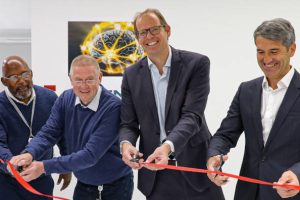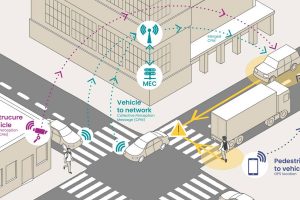If countries A and B sign a treaty agreeing to put certain nuclear warheads into storage, how do they know the other is not cheating? German and US scientists think they might have the answer, using a technique much like the PUFs – physically uncloneable functions – used in add unpredictable unique identity numbers to ICs. “The technology combines cyber-physical ...
Research
The latest electronics research news from within the industry and universities from around the world.
Superconducting single-photon camera has 400k pixels
Researchers at the US National Institute of Standards and Technology (NIST) have built a superconducting camera containing 400,000 pixels — 400 times more than any other device of its type. Superconducting cameras allow scientists to capture very weak light signals, whether from distant objects in space or parts of the human brain. Having more pixels could open up many new ...
THz radar detects distant rotation
Beams of electromagnetic radiation can be used to detect the rotation of distant objects if they have orbital angular momentum – known as ‘vortex waves’. It involves exploiting a rotational form of the Doppler effect, and researchers from University of Shanghai for Science and Technology (USST) have managed to get the technique working at terahertz (THz) frequencies. “To the best ...
Infineon opens quantum computer and AI lab
Infineon has opened a quantum electronics and AI-based power analysis laboratory. Established near Munich, its objectives are to develop and test support ICs for ion trap quantum computers, and to develop AI algorithms for the early detection of variances in power systems. ~20 researchers will be employed, and the lab has a cryostat for research down to 4K (-269°C). One ...
Metal halide perovskites promising for PV cells
Due to their extraordinary optical and electronic properties, metal halide perovskites have emerged as highly promising materials for next-generation photovoltaic (PV) cells, say Imec researchers. This is best illustrated by the rapid improvement in PCE (Piwer Cobversion Efficiency) – a performance measure – of perovskite solar cells from <4 percent to >20 percent in a matter of years. However, commercialization ...
Updated: Microwave fields sensed at a distance
Researchers at the University of Otago in New Zealand can’t quite point to a patch of free space and measure any microwave field that exists there, but they almost can. In a proof of concept, they positioned a passive glass sensing capsule up to 30m away from novel type of reader, and then interrogated the cell with lasers. “Importantly, compared ...
Laser vision will develop new markets
Epitaxial regrowth and GaAs can unlock new semiconductor laser markets, argues Richard Hogg. Design engineers might use epitaxial regrowth to enhance semiconductor laser performance and unlock new markets. Relatively mature epitaxial regrowth process for indium phosphide (InP) lasers are commonly used in 5G, datacom, telecom and co-located optics applications. Gallium arsenide (GaAs) is a less mature material system, which suits ...
UK government silicon incubator accepts first start-ups
Twelve British semiconductor start-ups been named as the initial members of ChipStart UK, a two-year pilot programme backed by the UK Government intended to provide early-stage IC design companies with technical and commercial help towards bringing their products to market. The £1.3m programme is being delivered by Silicon Catalyst UK, and is part of the UK National Semiconductor Strategy. “This ...
Can inter-vehicle communication improve road safety, and help drones cooperate?
French laboratory CEA-Leti looking to find ways to improve road safety through automated vehicle-to-vehicle communication. Its initiative is intended to “contribute to a higher level of vehicle automation and cooperation by expanding the latest developments in vehicular wireless communications that improve reaction time, pedestrian detection and overall vehicle performance”, according to Leti. By “combining learnings from participation in three EU ...
Imec reports on quantum computing progress
Imec has reported on the progress towards quantum computing. The long-term vision for quantum computing, says Imec, is the ability to leverage millions of noise-free qubits to address selected problems that are hard to solve with classical computers. Worldwide efforts are ongoing to scale up from hundreds to millions of qubits. Common challenges include well-controlled qubit integration in large-size wafer ...
 Electronics Weekly Electronics Design & Components Tech News
Electronics Weekly Electronics Design & Components Tech News









